Up Close With the 2024 Hyundai Santa Fe: A Radical but Promising Departure

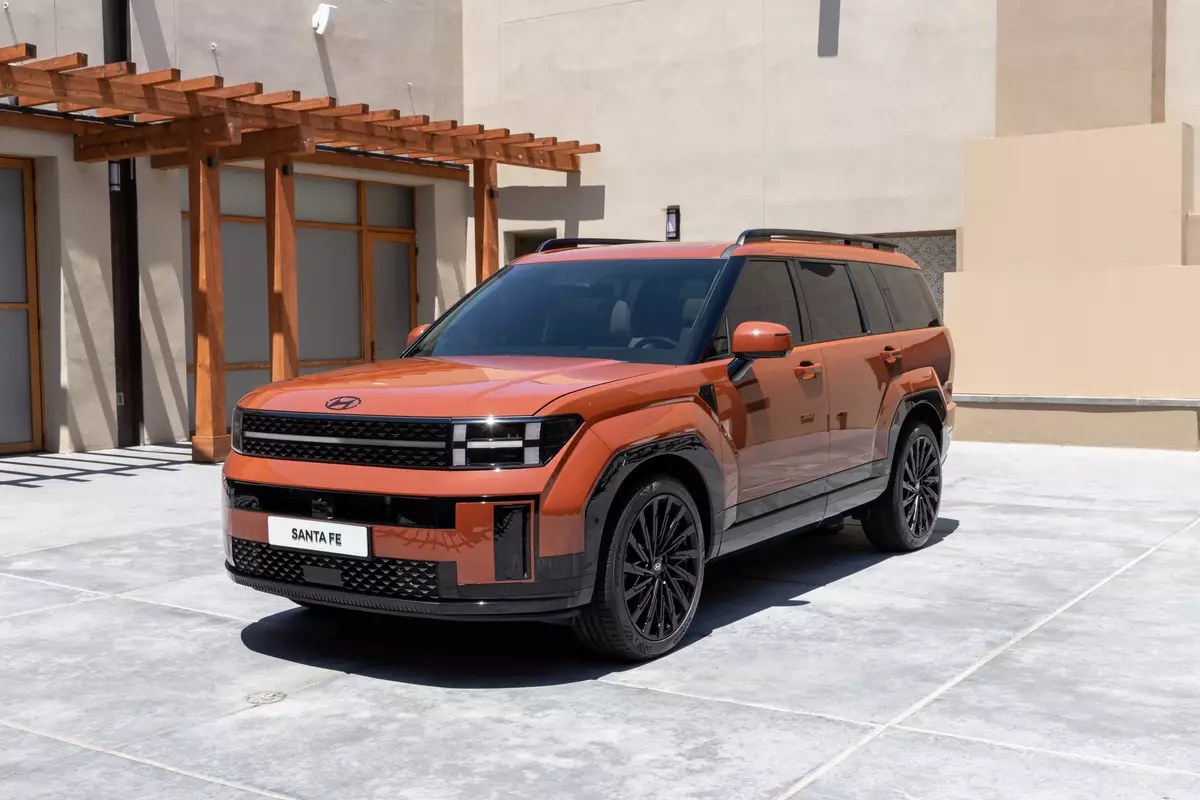
The 2024 Hyundai Santa Fe’s new look is a significant departure from what had, until now, been a very obviously carlike SUV. We got a chance to check it out in person in — naturally — Santa Fe, N.M., as part of its global reveal (per Cars.com’s ethics policies, we pay for all travel and lodging to manufacturer events). We came away impressed, and with lots of questions; unfortunately, we’ll have to wait until closer to the Los Angeles Auto Show in November for more answers.
Related: 2024 Hyundai Santa Fe: New Looks Outside and Inside, Carryover Powertrains
Looks Better in Person
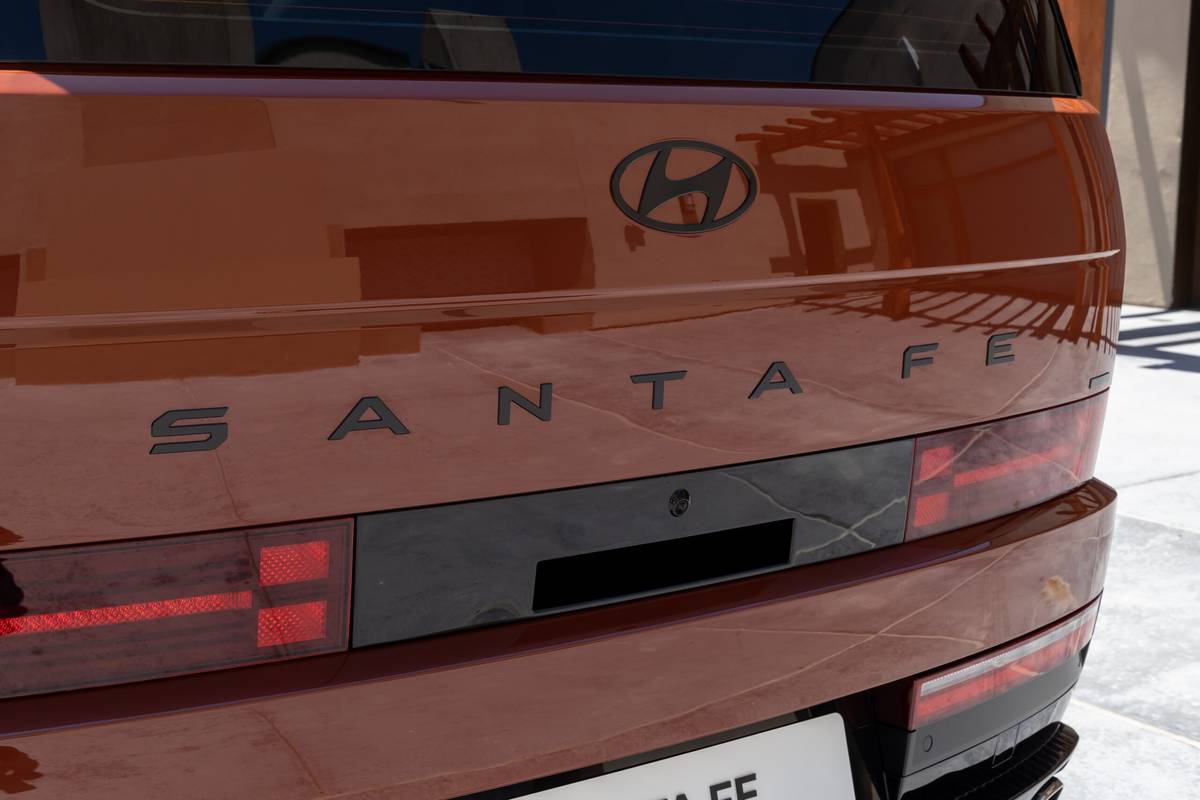
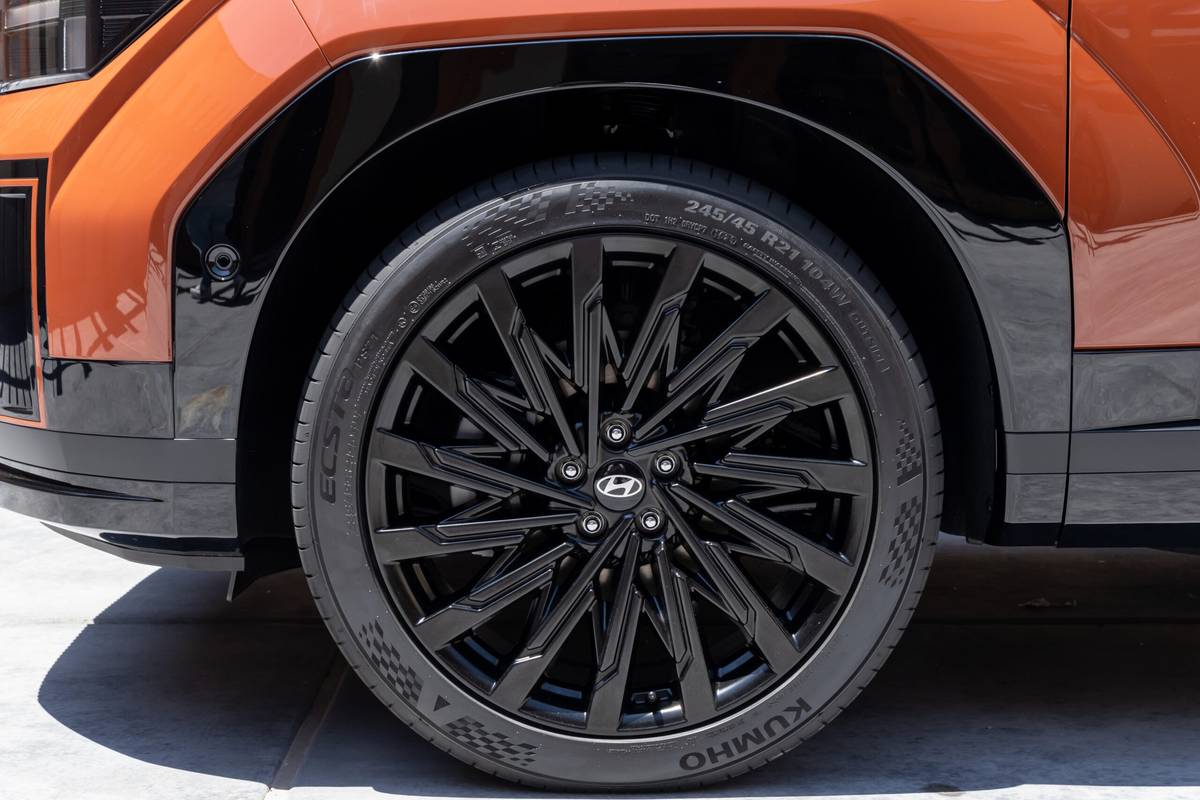
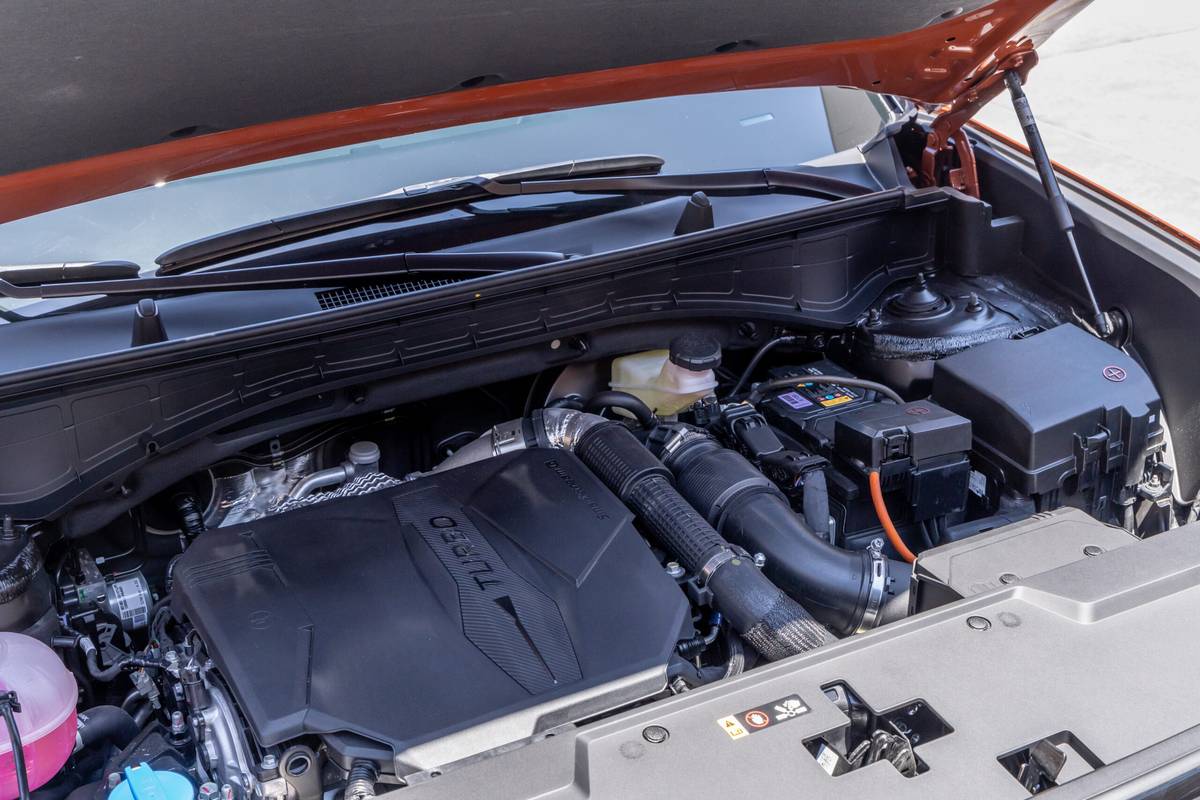

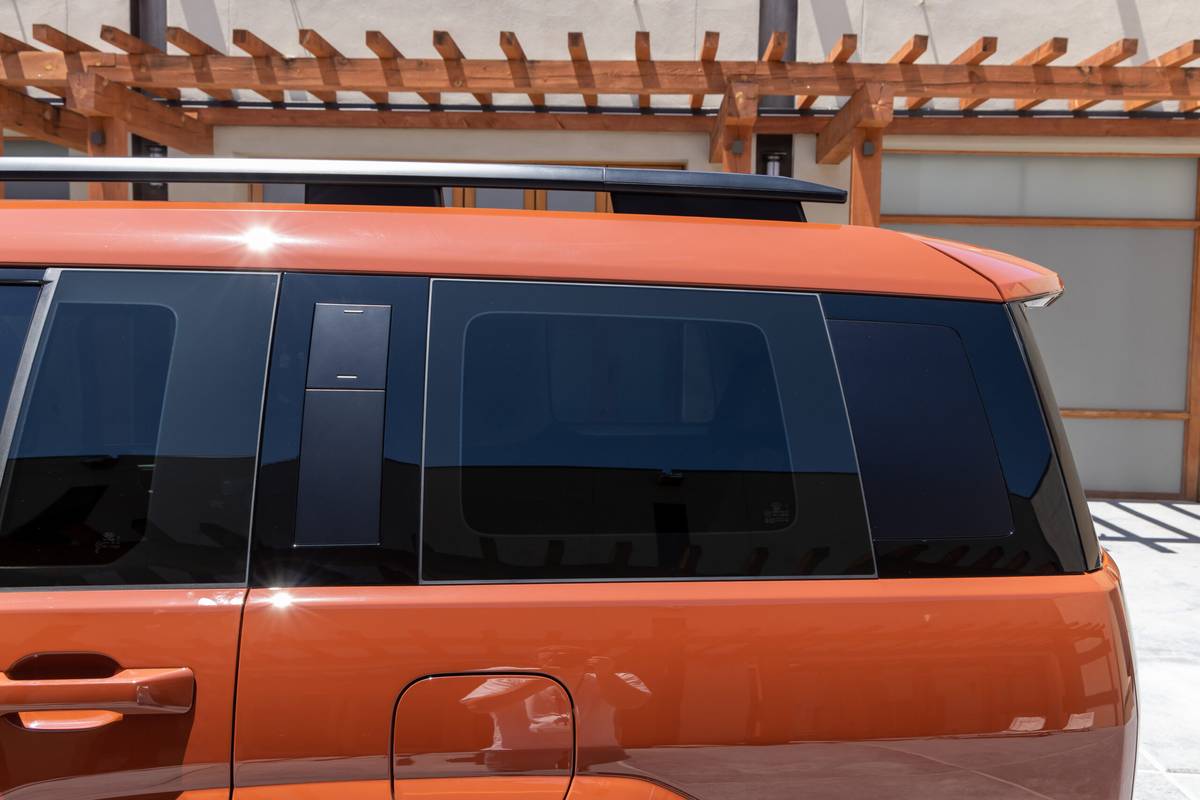
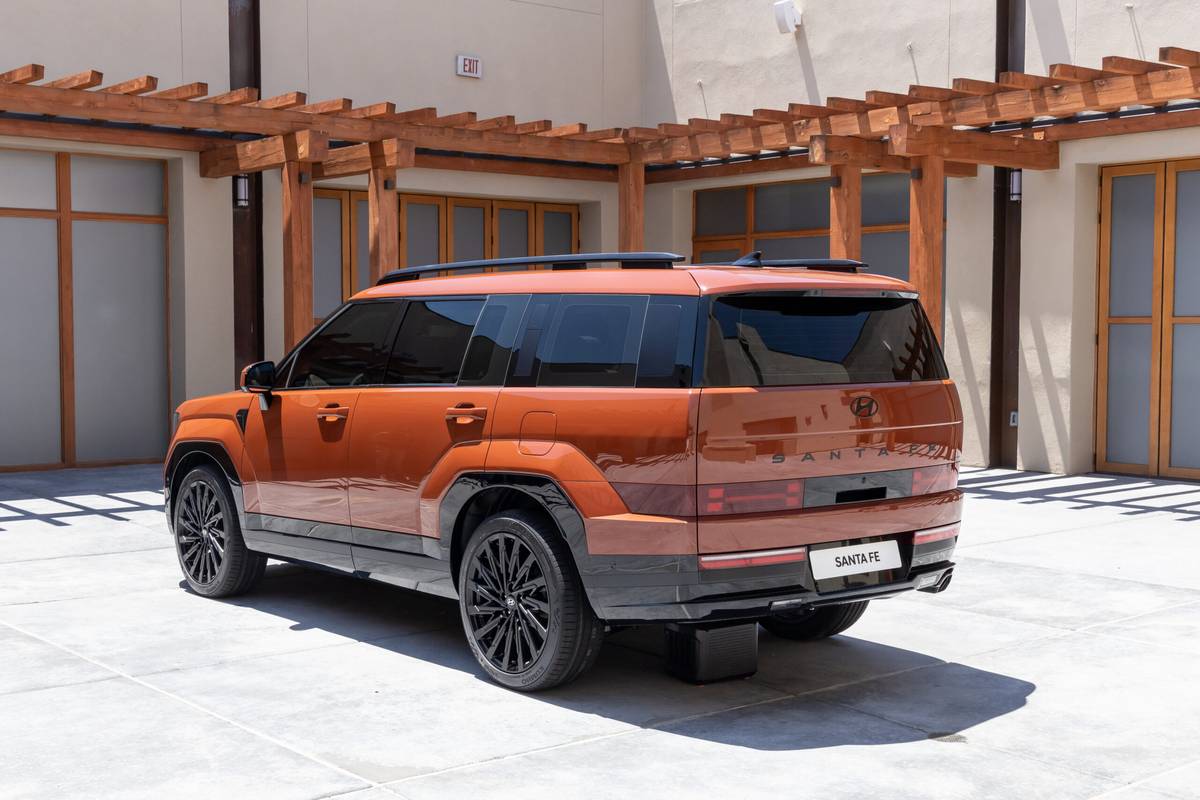

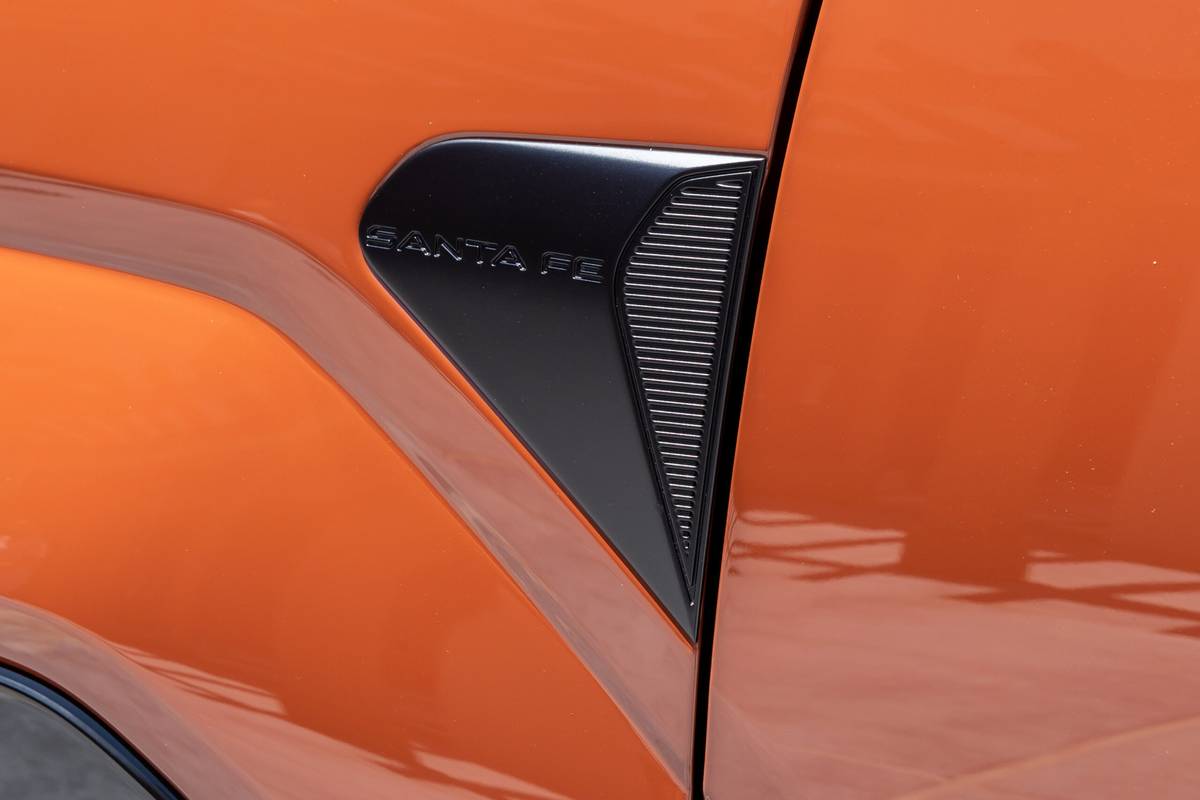
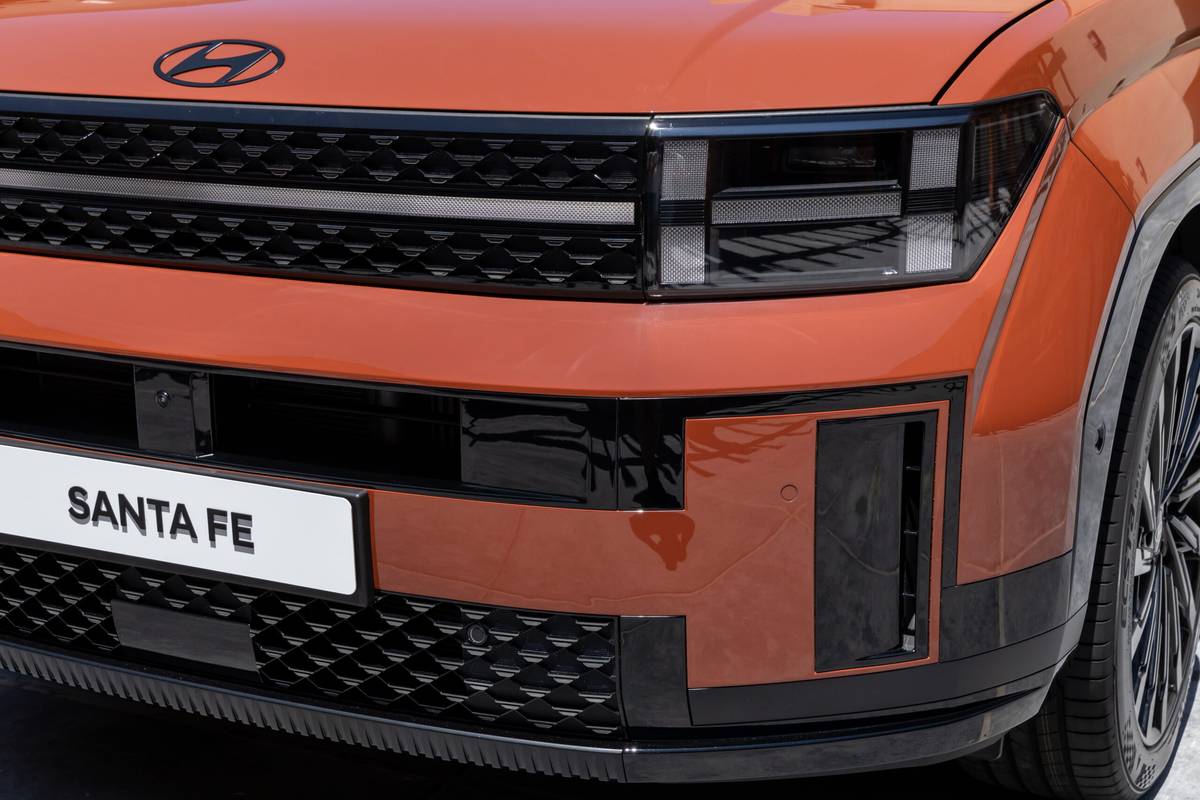











The Santa Fe’s new exterior continues a trend of updated Hyundai designs that don’t necessarily translate well in photographs. The squared-off design evokes the looks of a number of older or even classic SUVs, from the charitable (Land Rover Defender and Discovery) to the less fortunate (Ford Flex, Jeep Commander). The new headlights and taillights sit equally low, and while their H-pattern also looks like an old Space Invaders alien, they work well in this design.
Related Video:
Longer, taller and with a lengthier wheelbase than the previous Santa Fe, the new Santa Fe’s visual proportions give it a more commanding and rugged presence, which was Hyundai’s intent. The Santa Fe hasn’t grown to such proportions that it’s interchangeable with the larger three-row Palisade, but it’s closer. To better differentiate the two, Hyundai wants shoppers to think of the Santa Fe as a more outdoorsy option while the Palisade is a more luxurious urban people mover. Despite the lack of change in ground clearance, I think Hyundai has accomplished that with the Santa Fe.
My favorite feature of the exterior is the extra-wide rear opening; it’s almost 6 inches wider than the previous Santa Fe’s — while retaining nearly the same overall width — and looks ready for impromptu moves, large purchases or family road trips. Hyundai also pitched it as a sort of porch for lounging inside with the liftgate raised; I’d rather not invite bugs into my car, but sure, why not?
Mostly Roomy Interior
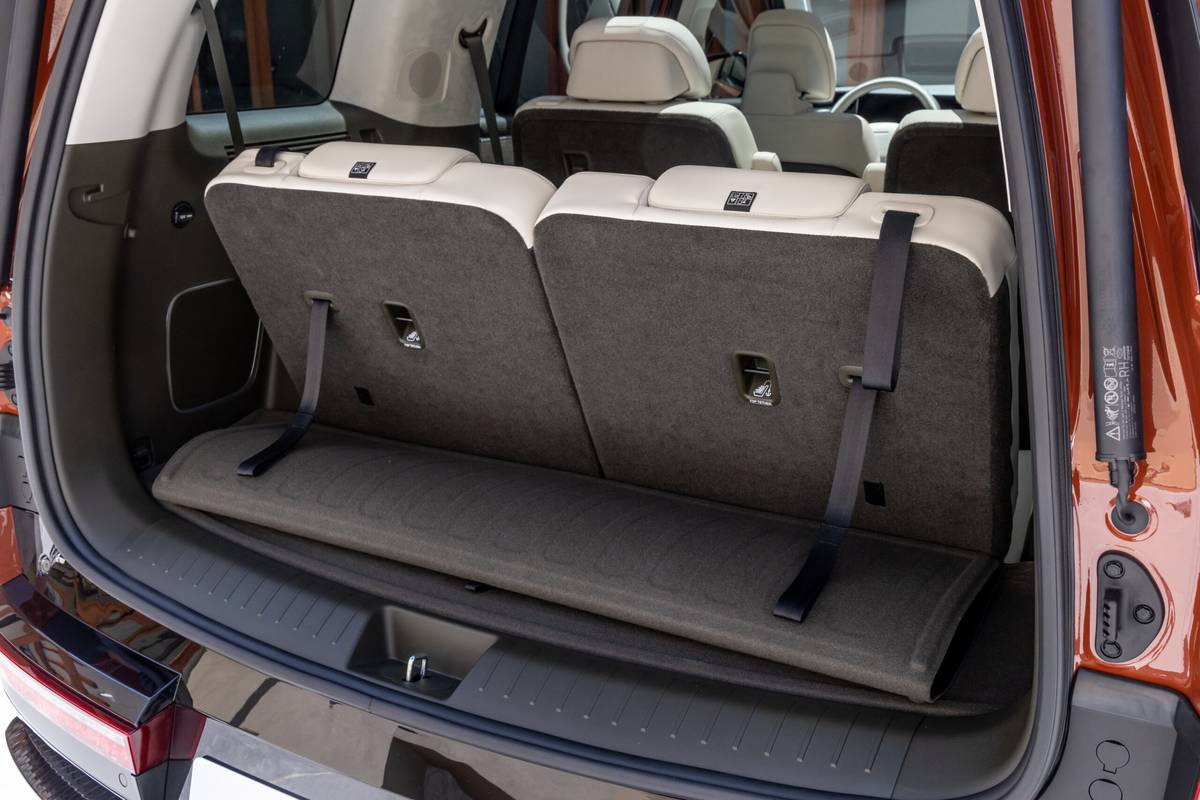
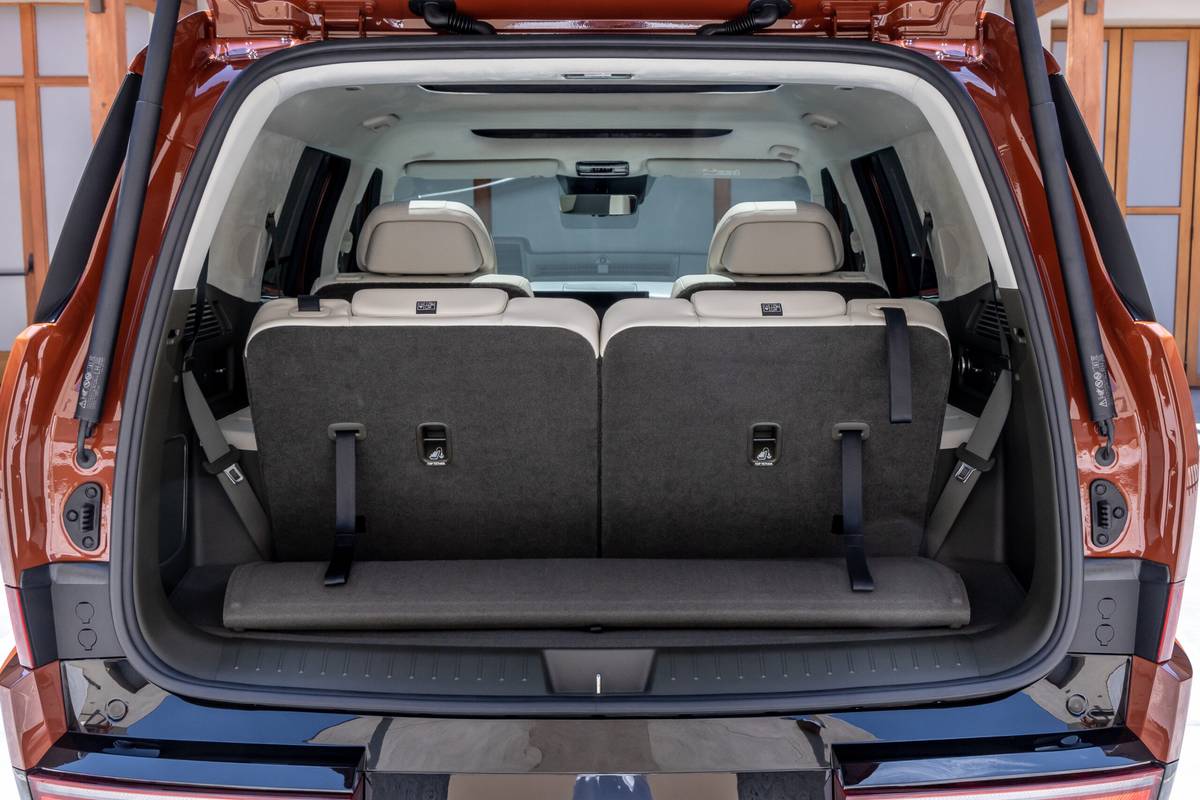

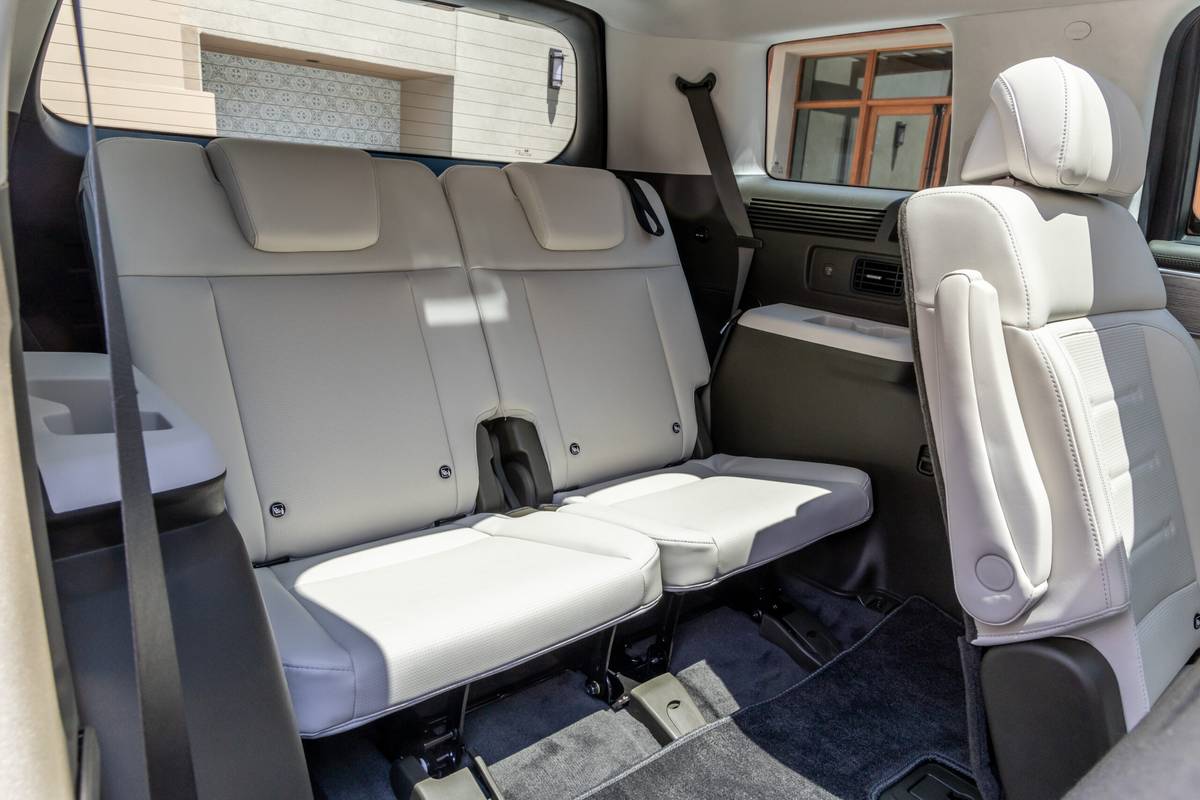



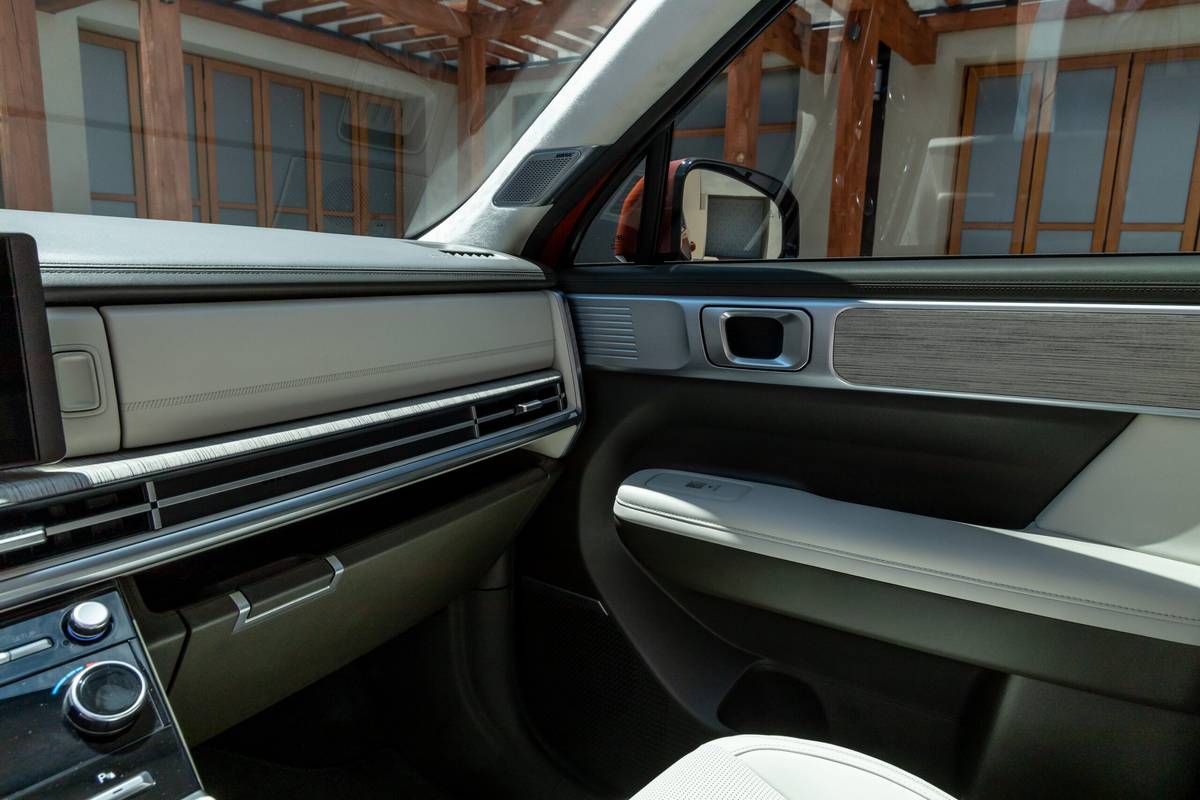
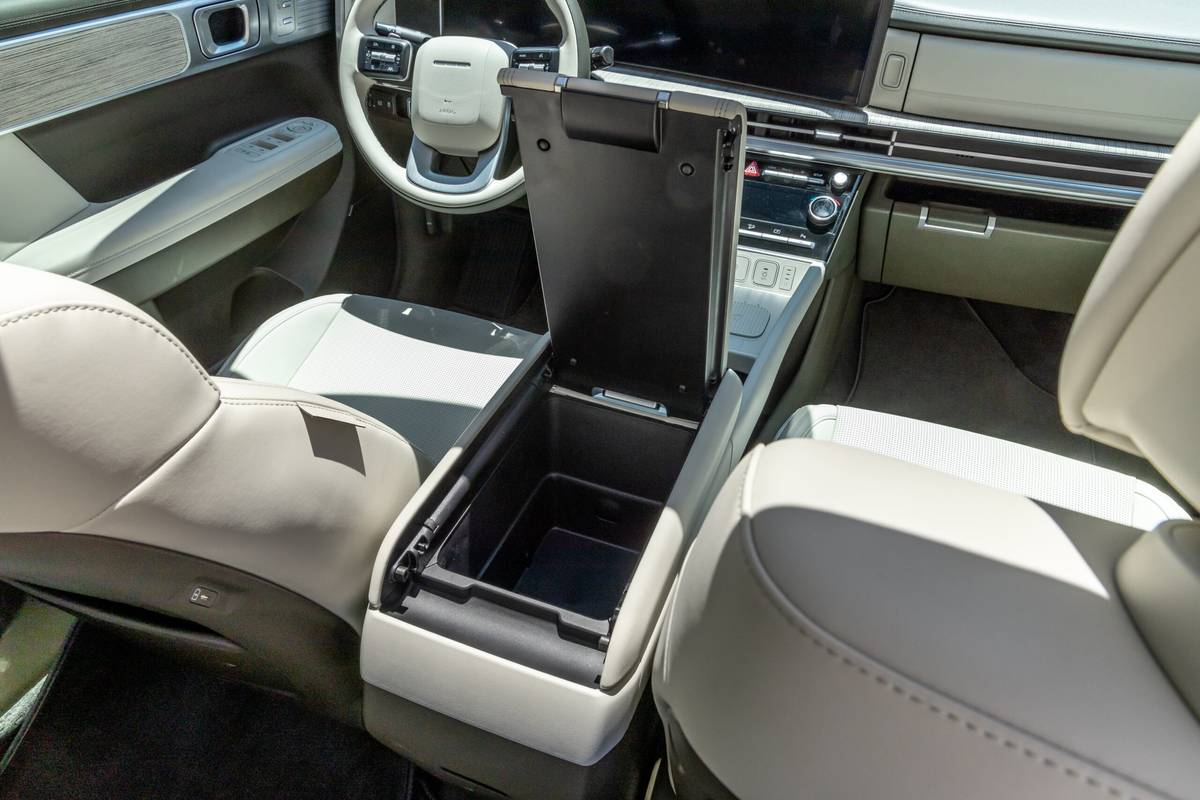
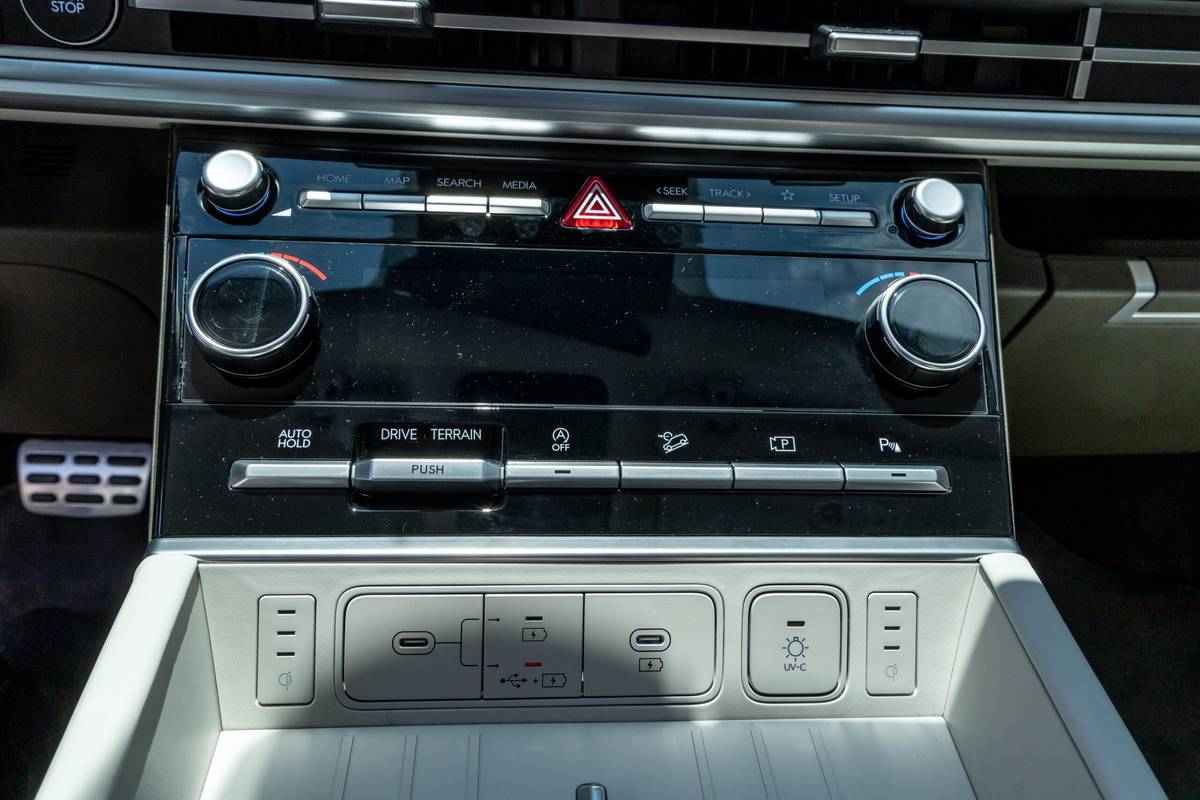

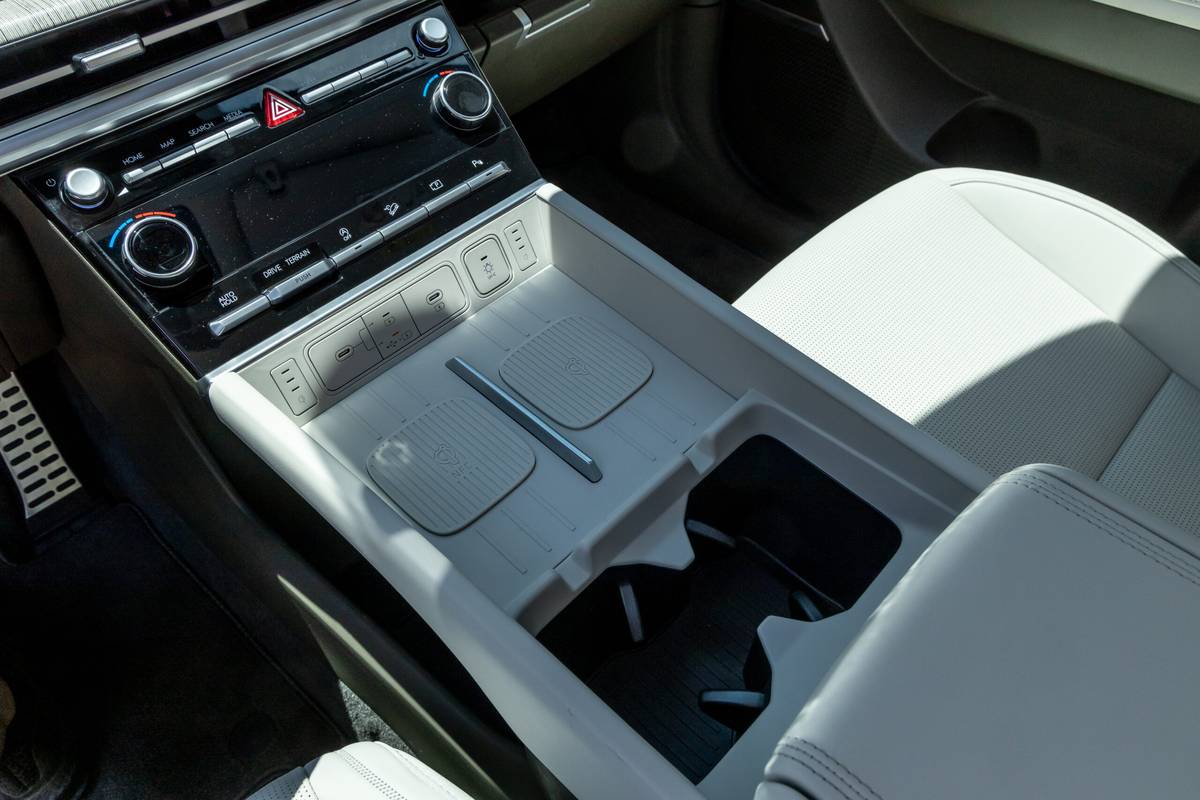
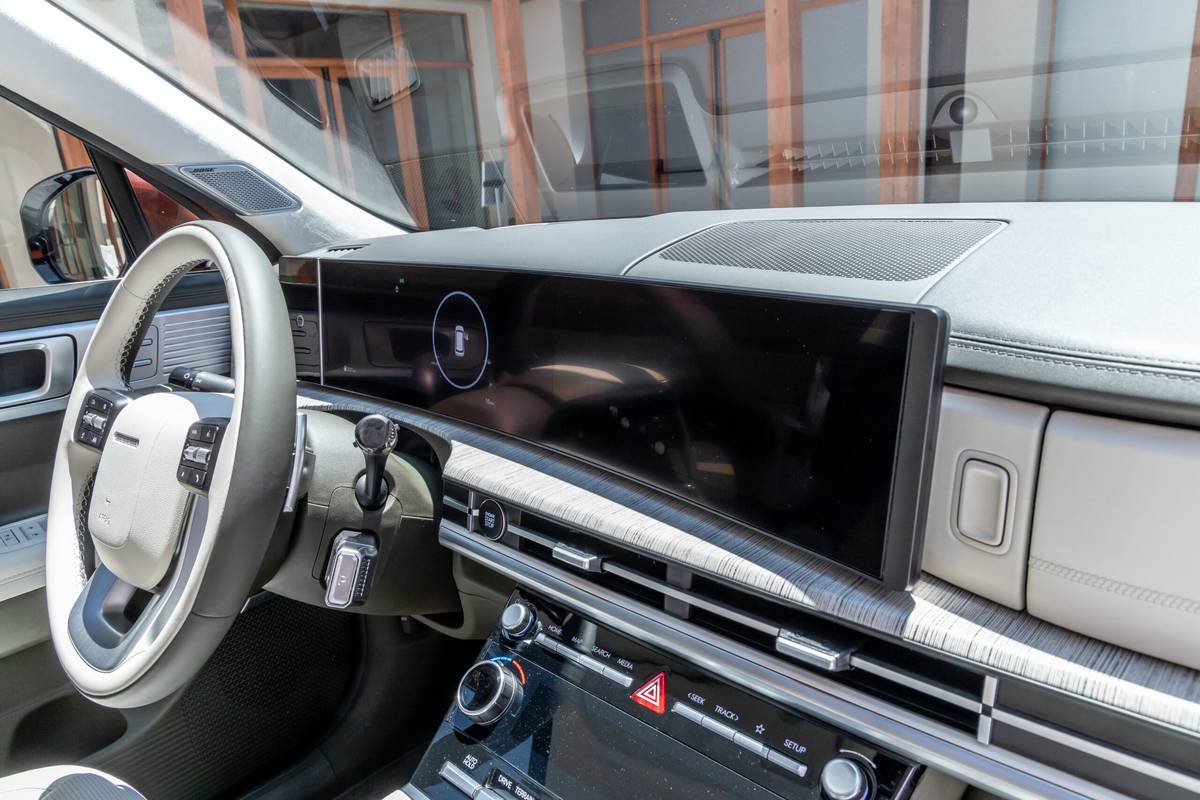
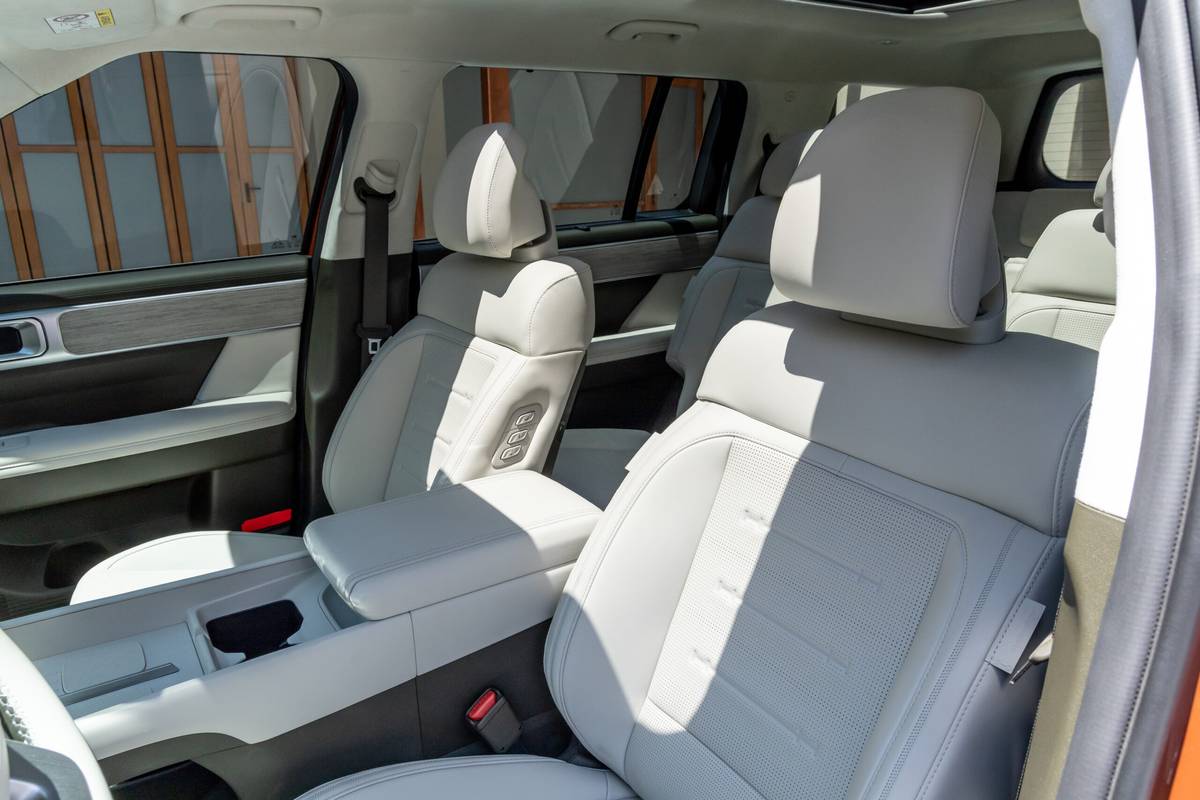

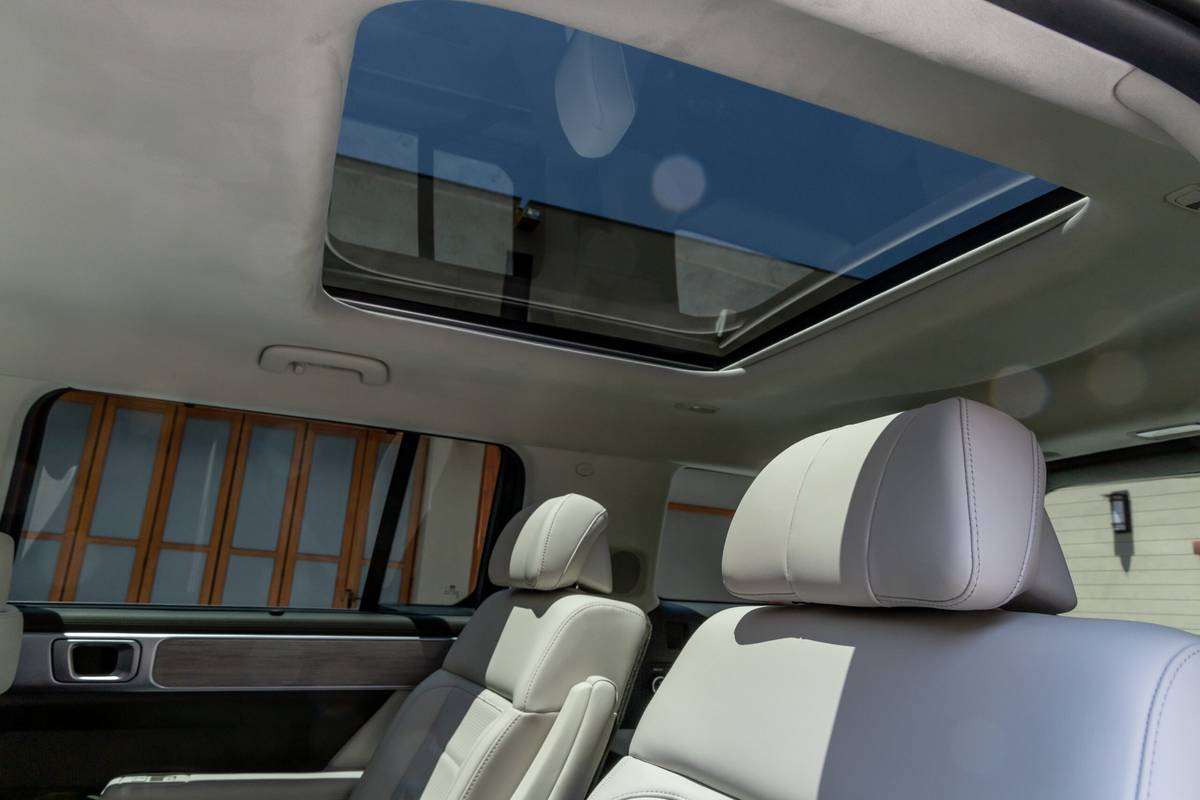
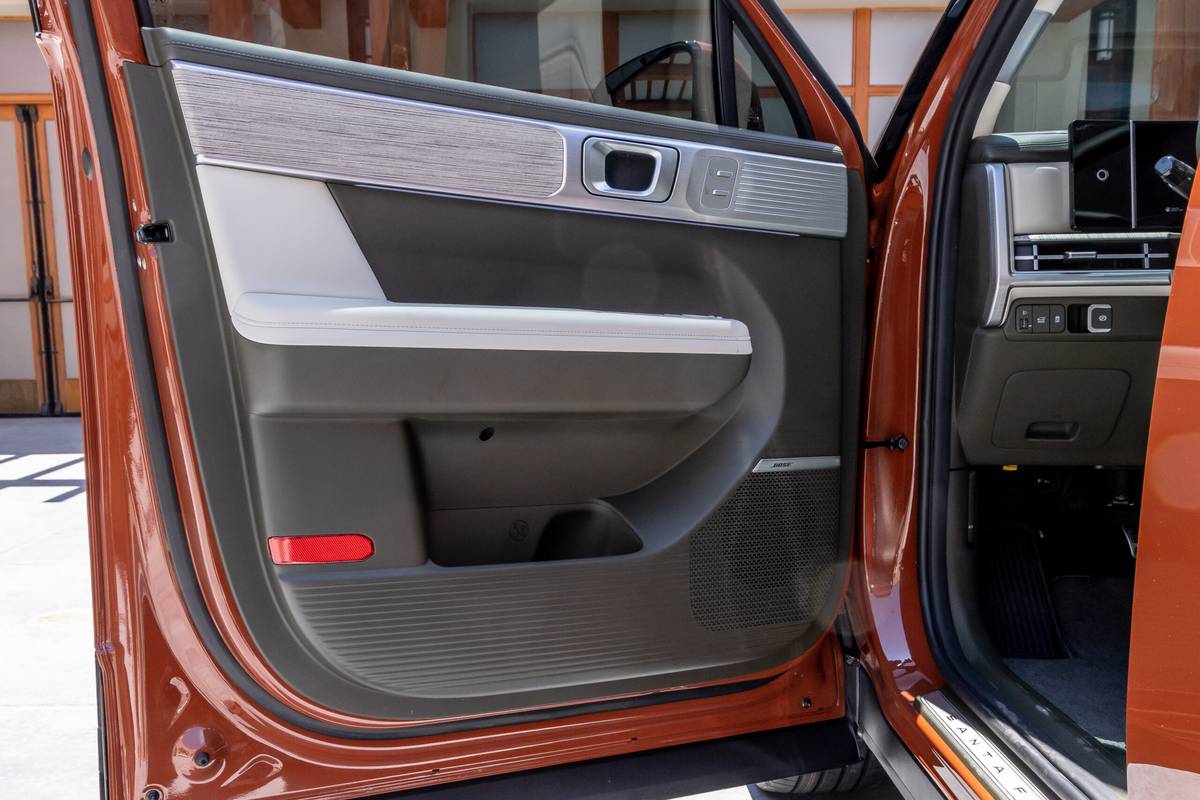

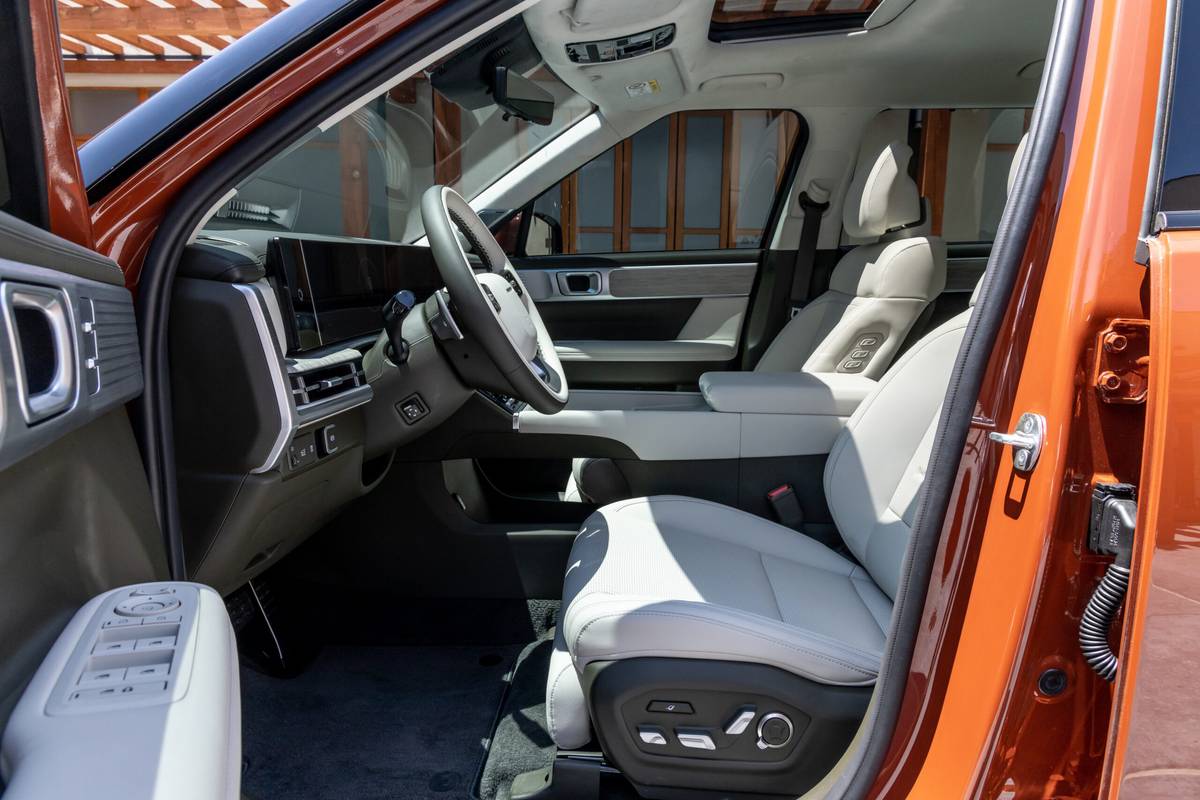
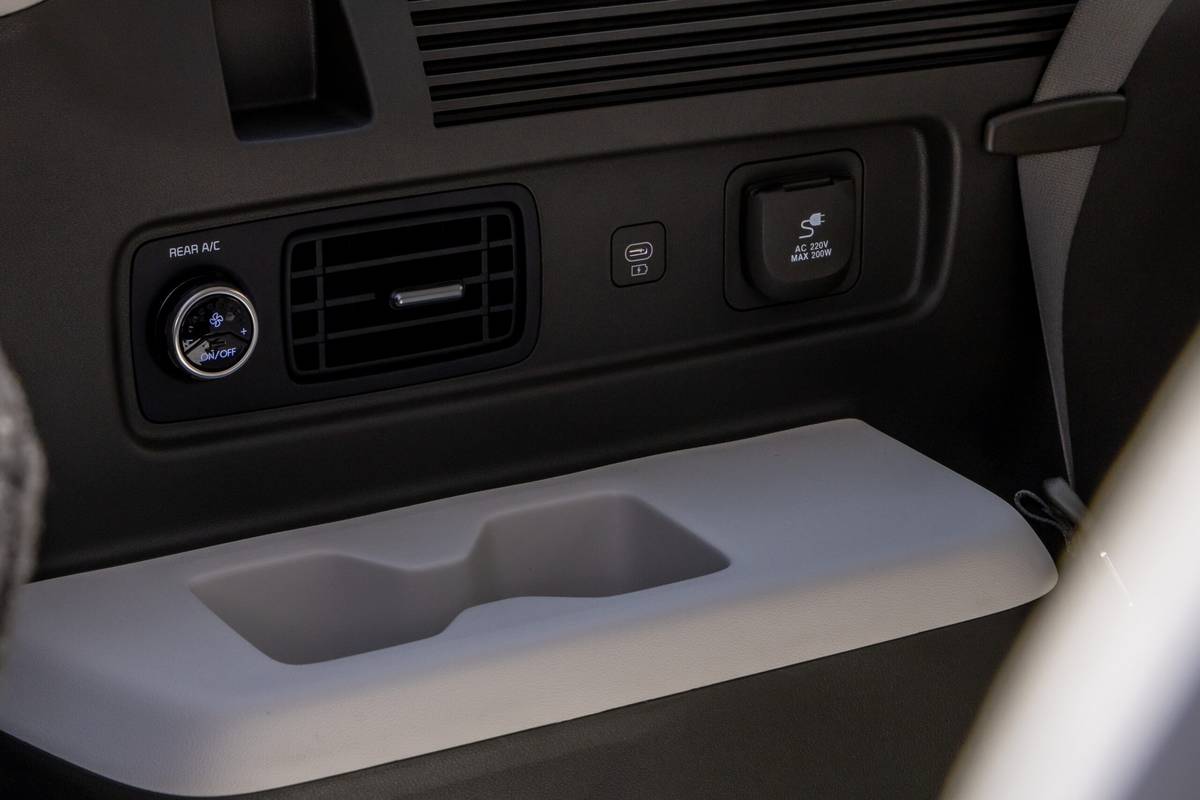

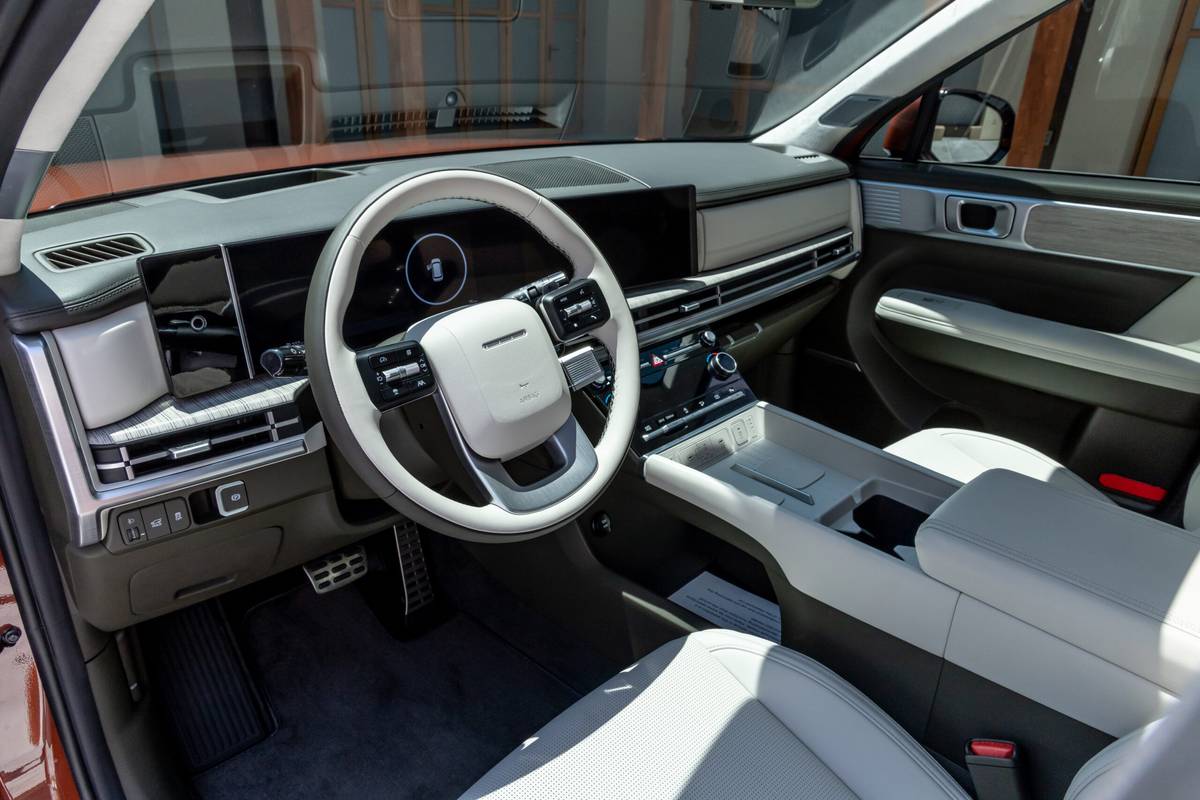






















Inside the Santa Fe, the first two rows of seats are nice and spacious, and the added wheelbase length improves second-row space. All versions we got to climb into were three-row six-seat models, and the second-row captain’s chairs were very reminiscent of the Palisade’s. The third row was not especially comfortable for me to sit in or access despite power sliding and tilting second-row chairs. My knees were very high up and legroom was only possible with the second-row seat pushed forward a bit. It’s more of a third row for short trips, shorter adults or children, akin to what you’d find in the similarly sized and vaguely related Kia Sorento or the class benchmark Toyota Highlander. More on the third row later.
The highlights of the cockpit are its dual 12.3-inch displays, one for the instrument cluster and a touchscreen for infotainment. Below that in the center console can sit not one but two wireless device chargers, which is a nice convenience if your passenger is capable of putting their phone down on longer drives. Hyundai switched the Santa Fe’s gear selector to the column-mounted electronic shifter similar to the one we first saw in the Ioniq 5 EV, and while the design isn’t my favorite, it does free up storage in the cockpit, with a large opening beneath the center console and a sizable bin, as well. The lid of the bin is hinged front and rear, allowing second-row passengers to open and access it more easily (a feature which will surely not be used for mischief). A trick feature on the vehicles on display was an optional ultraviolet sterilization chamber above the glove box.
Related to the large cargo opening, both the third- and second-row seats fold flat, allowing for a colossal-looking cargo area fit for large items.
Lots of Questions Answered Later
As this is a global reveal, there are still details for the North American Santa Fe that Hyundai hasn’t finalized yet. We know our version will have either a turbocharged 2.5-liter four-cylinder engine paired with an eight-speed dual-clutch automatic transmission or a hybrid powertrain with a six-speed automatic, but exact power figures and fuel economy haven’t been finalized yet. Inside, it’s also not clear we’ll even be getting that third row; North America hasn’t had a three-row Santa Fe since the 2019 Santa Fe XL.
Will the dual wireless chargers finally be paired with wireless Apple CarPlay and Android Auto? (On most current Hyundais, lower-level trims have smaller screens that are capable of wireless smartphone mirroring but no wireless device charging, while higher trims have wireless device charging but require a wired connection for either Apple CarPlay or Android Auto.) Rumors that the new Santa Fe will have it flew around the event, but Hyundai has yet to confirm anything to us.
All of these questions — as well as how much the new Santa Fe will cost — should be answered closer to the Santa Fe’s North American-spec debut later in the year. For now, the new Santa Fe shows a lot of promising improvements to what was already a stellar mid-size SUV.
More From Cars.com:
- 2024 Hyundai Santa Fe Unveiled, Gets Extreme Makeover
- 2023 Hyundai Santa Fe Review: Could This Be the Perfect Family Crossover?
- What Are the Most Fuel-Efficient Cars?
- What’s Changed for the 2023 Hyundai Santa Fe?
- Research the Hyundai Santa Fe
Cars.com’s Editorial department is your source for automotive news and reviews. In line with Cars.com’s long-standing ethics policy, editors and reviewers don’t accept gifts or free trips from automakers. The Editorial department is independent of Cars.com’s advertising, sales and sponsored content departments.

Road Test Editor Brian Normile joined the automotive industry and Cars.com in 2013, and he became part of the Editorial staff in 2014. Brian spent his childhood devouring every car magazine he got his hands on — not literally, eventually — and now reviews and tests vehicles to help consumers make informed choices. Someday, Brian hopes to learn what to do with his hands when he’s reviewing a car on camera. He would daily-drive an Alfa Romeo 4C if he could.
Featured stories













